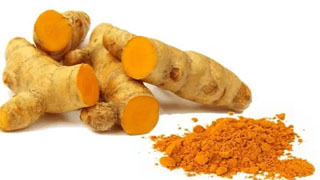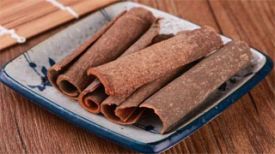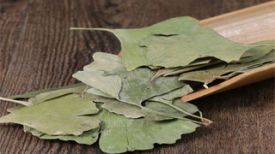
1. Alias
Huangjiang and Baoding fragrance.
2. Plant morphology
Perennial herb. The root is thick and robust, with an enlarged end that grows into an oval or spindle shaped tuberous root, gray brown in color. The rhizome is oval shaped, with a yellow inner surface, and the lateral rhizomes are cylindrical, reddish yellow in color. Ye Jisheng; Leaves elliptical or narrow, apex gradually pointed, base gradually narrowed; The petiole is about half the length of the leaf blade, sometimes almost the same length as the leaf blade; The width of the leaf sheath is about the same length as the petiole. The spike shaped inflorescence is dense; The bracts are wide and oval in shape, each containing several small flowers. The top bracts are oval or narrowly oval in shape, and there are no flowers in the axils; Calyx with 3 blunt teeth; The upper part of the corolla tube is funnel-shaped and has three lobes; The stamen septum is rectangular, the filaments are flattened and wide, and the lateral degenerated stamens are oval in shape; Stamen 1, ovary lower, style filamentous, base with 2 rod-shaped bodies, stigma bilabial. Capsule membranous, spherical, 3-lobed. The seed is oval in shape with a false seed coat. The flowering and fruiting period is from July to August.
3. Origin distribution
Mostly planted in sunny fields with thick and loose soil. Distributed in Fujian, Zhejiang, Taiwan, Hubei and other places.
4. Harvesting and processing
Dig in autumn and winter, wash thoroughly, cook until fully cooked, sun dry, remove outer skin, and then sun dry again.
5. Characteristics of medicinal herbs
Processed from the main root stem, it is oval or spindle shaped, measuring 2-3.5 centimeters in length and 1.5-2.5 centimeters in diameter. The surface is brownish yellow to light brown, with short fibrous roots attached, and there are many point like sunken fibrous roots or a few circular lateral root and stem scars. Hard in texture, with a broken surface ranging from dark yellow to reddish yellow, keratinous, with a waxy luster, and dotted vascular bundles. The aroma is unique, the taste is pungent, and it is slightly bitter. Processed from lateral rhizomes, it is cylindrical in shape, slightly flattened, 2.5-6 centimeters long, 0.8-1.5 centimeters in diameter, slightly curved, often with short branches, one end rounded and blunt, and the other end in cross-section. There are longitudinal wrinkles and obvious links on the surface.
6. Sexual Taste Returning to the Classics
Warm in nature, bitter and pungent in taste. Returning to the Spleen Meridian and Liver Meridian.
7. Effect and Function
Breaking blood, promoting qi circulation, and relieving pain through menstruation. A blood activating painkiller classified under the category of blood activating and stasis removing drugs.
8. Clinical application
The dosage is 3-9 grams. Used to treat symptoms such as bloating and pain in the heart and abdomen, pathological changes, blood stasis and menstrual disorders in women, postpartum stasis and abdominal pain, traumatic injuries, and abscesses.
9. Pharmacological research
Pharmacological research shows that this product has the functions of protecting liver, cholagogic, antibacterial, anti-inflammatory, anti-tumor, anti AIDS, anti fertility, reducing blood fat, anti pathogen microorganisms and anti parasite, accelerating wound healing, anti mutation, etc. Has a protective effect on the digestive system; Increase coronary blood flow in the heart; Anticoagulation and inhibition of platelet aggregation.
10. Chemical composition
It mainly contains volatile oils and phenolic substances. 51 components have been identified in the volatile oil, mainly terpenoids such as gingerol and gingerol; The phenolic components mainly include curcumin, etc. The content of curcumin, demethoxycurcumin, and bis demethoxycurcumin was determined using thin-layer colorimetric method, and the content of curcumin was determined using thin-layer scanning method. It also contains turmeric ketone, 3-sitosterol, 3-sitosterol-3-O-carotenoids, turmeric polysaccharides, etc.
11. Usage taboos
Blood deficiency without qi stagnation and blood stasis, and pregnant women should take it with caution.
12. Compatibility prescription
① To treat right rib pain and prevent bloating, do not eat: 15 grams each of turmeric (washed), tangerine peel (removed pulp, stir fried with bran), cassian (removed rough skin, no visible fire), and 6 grams of licorice (roasted). Above is fine powder, take 6 grams per dose. Ginger soup can be mixed with hot wine at any time. (Ji Sheng Xu Fang "Pushing Qi to Disperse)
② Treating heartache: 30g turmeric, 90g cinnamon (without rough skin). Top two flavors, mash the Luo into a fine powder. Take 6 grams per serving and adjust to vinegar soup. (Jiang Guisan from the "General Records of St. Ji")
③ Treatment for arm and back pain, non wind and non phlegm: 30g turmeric, licorice, and qianghuo each, 60g Atractylodes macrocephala. Take 30 grams per serving and fry in water. Pain below the waist, add sea paulownia bark, Angelica sinensis, and peony. ("Chishui Xuanzhu" Turmeric Powder)
④ Treating unbearable toothache: divide turmeric, white atractylodes, and asarum into equal parts. Above is coarse powder. Rub the affected area, spit out for a moment, and rinse your mouth with salt soup. For those with red and swollen faces, add turmeric and Ligusticum chuanxiong to make the swelling disappear immediately. (Jingyue Quanshu, Turmeric Powder)
⑤ To treat pain and itching in newborns with various sores and ringworm: apply turmeric. (From "Qian Jin Yao Fang")
⊙ The content of the article is for clinical reference only. Non TCM professionals are not allowed to test drugs.


